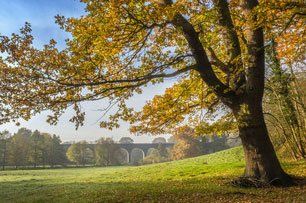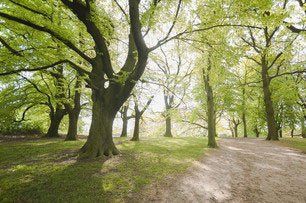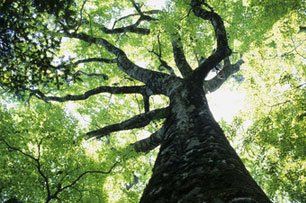Woodland management
Woodland is a habitat where trees are the dominant plant form. The individual tree canopies generally overlap and interlink often forming a more or less continuous canopy which shades the ground to varying degrees.
The specific plants and animals to be found in a woodland depends on the type of woodland involved. Woodland come in different types and can be generally identified by the type and/or mix of dominant trees, making up the main canopy of the woodland. They can be divided into two main types, coniferous and broadleaf and are composed of a variety of plants of differing heights, giving gives woodland a distinct vertical structure.
Types of Broadleaf Woodland are:
- Oak (Quercus)
- Beech (Fagus Sylvatica)
- Silver Birch (Betula Pendula)
- Ash (Fraxinus Excelsior)
- Alder / Willow (Alnus Glutinosa / Salix)
Types of Coniferous Woodland are:
- Scots Pine (Pinus Slyvestris)
- Yew (Taxus)
Ancient Woodland
Ancient woodlands in Britain are those which have been continuously wooded for a minimum of three to four hundred years (although not necessarily with the same type of tree cover). They are frequently diverse and will often also contain rare or unusual species. Additionally, they may have historical and archaeological significance because of the low level of physical disturbance.
Ancient woodlands are habitats which can have enormous biodiversity.
They may contain much of the same biodiversity present in recent woodlands. However, the age of many of the trees and their resultant large size, thick, cracked, fissured bark and rot-holes, all provide several additional microhabitats for other species. The sheer age of the habitat itself and the absence of major physical disturbance also gives rise to a continuum of conditions which favour a variety of rarer species.
Why Woodland Management?
Woodlands are actively managed for several reasons; these include maximising the yield of economically important products such as timber and game, as well as for conservation and biodiversity. Recreational access is also becoming increasingly important.
Where woodlands are multipurpose, conflicting management options can often arise.
Native woodlands in Britain were traditionally managed to provide a continuous source of wood for firewood and structural materials. Animal diversity is to a great degree controlled by plant diversity; this is because the plants generally provide the architecture and structure of habitat, as well as being the basis of food chains.
Plant diversity in woodlands can be encouraged by making sure there are a variety of light levels within a woodland, from deep shade to open glades. Planting a variety of native trees will also enhance animal diversity because native trees support many invertebrate species. Wildlife conservation and environmental protection should concern us all.
New Horizon Horticultural services can help you to manage your woodland to your specific requirements. We can create natural habitats encouraging flora and fauna to thrive.
Services offered:
- Thinning out of dense overgrown woodlands
- The underplanting of existing woodlands with poor regeneration
- The creation of new plantations
- Full woodland maintenance plans which cater to your requirements.
- A site evaluation would be carried out, followed by the development of an annual management plan. All work would be carried out according to the agreed maintenance program by ourselves.
"Andrew and team helped me make my 9 x 5 metre space into a stunning garden. They installed grey sandstone paving, new turf, a metal arch, 2 raised beds and a sedum living roof. They worked quickly, professionally and efficiently and cleared up thoroughly. The standard of work and the final result exceeded my expectations. Definitely recommend New Horizon."
- Susan Wood, Gateshead




